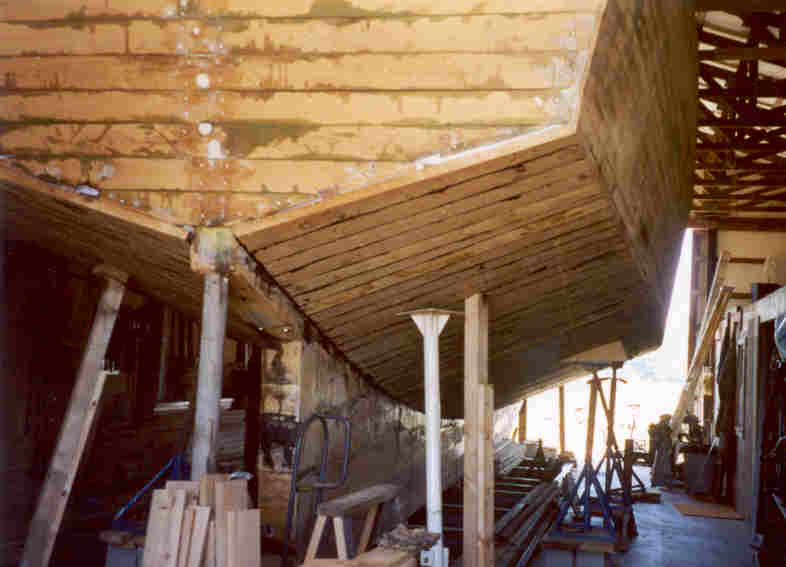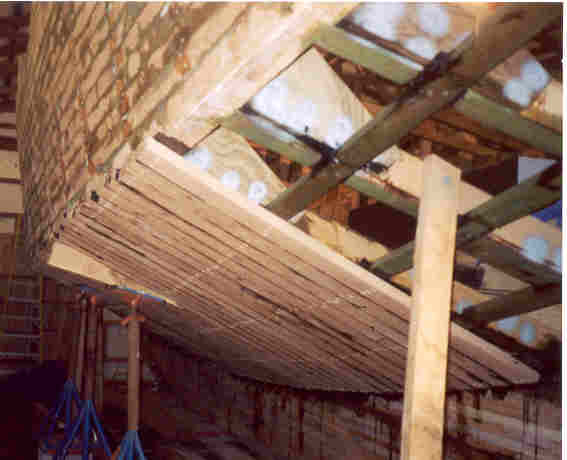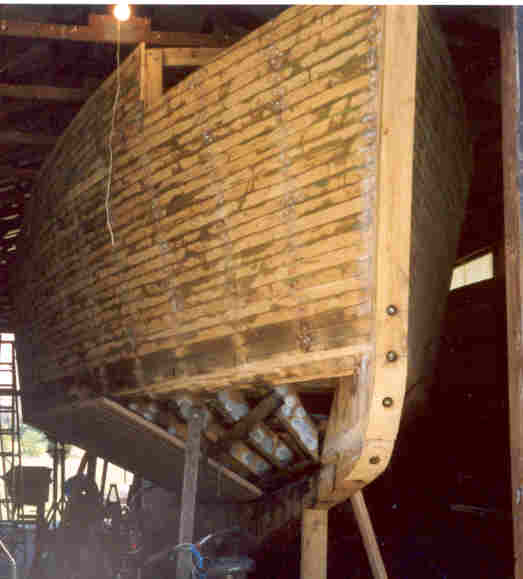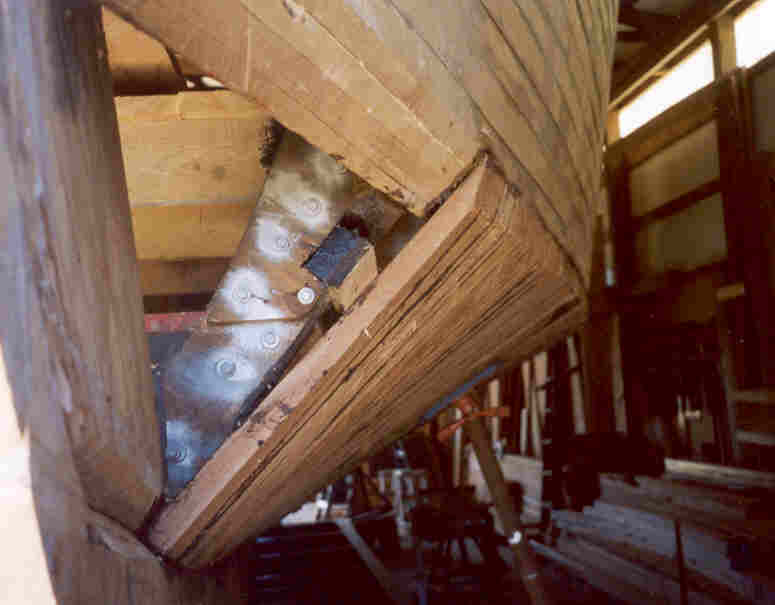Page 2: Building a Wood 48′ Diesel Duck
After a several month pause to recover from an injury, Vickie & Harry are back at it. These photos came June ’03
 |
The sides have their first layer and now comes the bottom plank. The first step is installing the stringers. The bottom is “cross-planked” which is very simple, and while not commonly seen away from the US south, is a very old and good way to build. And about the simplest way too! |
 |
The stern is planked up. Note the rudder post. The builders have decided on the inboard rudder. I like that of course but an outboard rudder looks pretty neat, even if it does add 3′ to the dock fees….!
9/3/06 note: You’ll see later they went with the outboard rudder after all! A good choice!
|
 |
Planking is working towards the bow. Note the bottom planks are not attached to the frames (NOT ribs!). The frames support the CHINE and the STRINGERS, and the planks are attached to them. The old time boats in Maryland built this way often didn’t even have bottom frames. Instead, they had just a massive keel and heavy chine. |
 |
Bottom plank headed to the bow. The side looks odd because what you’re seeing is the raised fwd. deck and then the drop to the bow. The bulwarks will smooth up this transition! |
 |
This shot of the bow planks heading into the stem really shows the appeal of “cross-planking” instead of “normal” planking. A “fore & aft” plank would have a hell of a twist to make the transition. The cross-plank simply flows along. You cut the bow pieces into triangular shapes and they lay flat on the chine as well as in the rabbet. |
Go to Page 3: Building a Wood 48′ Diesel Duck
Back to Previous page




